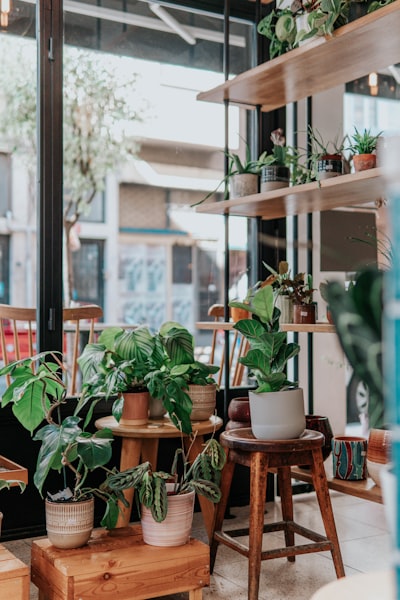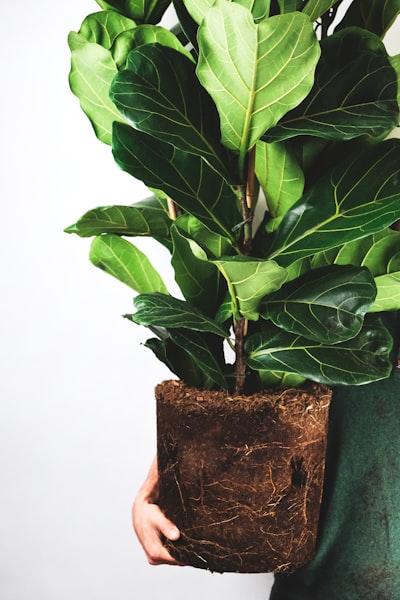- 11 Essential Tips for Keeping Your Houseplants Healthy
- Watering Your Houseplants
- Fertilize Houseplants Periodically
- Propagate Houseplants When Needed
- Re-pot Overgrown Houseplants
- Remove Dust from Plants
- Prune and Pinch Back Houseplants
- Deadhead Flowers and Remove Dying Leaves
- Watch for Houseplant Diseases
- Control Insect Pests
- Wintertime Houseplant Care [how to keep tropical plants warm in winter]
- More Houseplant Care Tips [ 11 Tips for Keeping Indoor Plants Healthy]
- Conclusion
- FAQ
11 Essential Tips for Keeping Your Houseplants Healthy

Watering Your Houseplants
- 11 Tips for Keeping Indoor Plants Healthy -Adding an adequate amount of water to the plant pot is extremely important as it maintains a sufficient amount of moisture in the plants and supports the plant’s new growth. All houseplants have slightly different watering requirements, depending on how they’re grown and seasonal changes in plant growth. Watering should be done on an as-needed basis rather than on a set calendar schedule. Plants grown in well-drained soil in a suitable-sized container should be watered when the top 1/2 to 1 inch of soil feels dry. Cacti and succulents require less water than flowering plants, which require slightly more. One of the most common causes of houseplant death is overwatering. If you’re unsure how much to water, err on the dry side rather than overwatering your plants.

Fertilize Houseplants Periodically
– Fertilizers play a significant role in the growth of the plants as it makes the roots of the new plant-strong and makes the plant grow healthy even in low light conditions. It is determined by the plant’s growth rate and age, and the time of year. Because most houseplants overgrow in the spring and summer, this is the best time to fertilize them.
Most houseplants don’t require much if any, fertilizer during the short days of fall and winter. To determine how much plant food to use, read the label. Overfertilizing your houseplants, like overwatering, should be avoided. Excessive fertilizer can burn their roots and stunt their growth. Use a fertilizer with relatively equal amounts of the three numbers on the label (nitrogen, phosphorus, and potassium) for flowering varieties. If the nitrogen content is too high, the plant will produce many leaves but few flowers. [fertilizing indoor plants in winter]

Propagate Houseplants When Needed
– The best time to propagate your plants is in early spring because they have come out of their rest mode and are ready to start growing again. Some houseplants, such as bromeliads, produce new shoots or offsets at the base of the plant, which you can divide and plant.
You can grow a fresh African violet from a single leaf by immersing the stem end in water for a few weeks. Other houseplants, such as the spider plant and the strawberry begonia, reproduce by sending runners that end in new plantlets.
It’s very simple to root these to start new plants; usually, you soak the base of the plantlets in water for a few days to help them develop roots before planting them in soil. Tips & Tricks to maintain indoor plants

Re-pot Overgrown Houseplants
-Re-potting is a challenging task as making sure that the roots of the plant touch the bottom of the pot is necessary for the plant to thrive. You can also use a container with an insert that will hold the root ball and allow for drainage. and making sure that the new pot has a drainage hole is essential.
If the plant’s roots are circling the inside of the container, it’s time to re-pot it. If the plant has outgrown its container, you can move it to a slightly larger one. If you want to keep it in the same pot, cut some of the roots off with a sharp knife and replant it in the container with fresh potting soil.
Remove Dust from Plants
– Almost all houseplants benefit from regular cleaning. If the plants have hairy leaves, wash them with a gentle shower of room-temperature water or dust them with a soft brush (which can hold onto moisture and encourage disease).
For plants with smooth leaves, a cloth can be used to gently wipe away any dust that has accumulated on the leaves. This improves the appearance of your plant, but it also helps it absorb more light. Paper towels can be used to remove dust from the plants which accumulates on the top of the leaves of the plant without damaging it. [Tips & Tricks to maintain indoor plants]
Prune and Pinch Back Houseplants
– Houseplants are usually pruned before the beginning of the growing season, which is usually around mid-winter or late spring for many varieties. You can prune at any time of year, but after a summer of growth, fall is a natural time to break out your pruning scissors. The primary reasons for pruning houseplants are to improve their appearance and keep them from growing too large.
Cutting overgrown houseplants back to 4 to 6 inches tall, similar to propagating, helps rejuvenate them. This method works well for encouraging new growth in trailing plants. Make your cuts just above a cluster of buds or side shoots on the stem you want to prune. This is where the new growth will begin.
Remove any dead or diseased leaves and stems as well to help keep the problem from spreading.

Deadhead Flowers and Remove Dying Leaves
– It is crucial to remove the dying leaves from the house plant to support its growth, but properly cutting the leaves from the edges is important as improperly cut leaves can have a negative impact on the growth of the houseplant.
Remove faded flowers from your plants to promote more blooms and to help prevent disease problems. Remove any yellow, brown, or withered leaves while you’re at it. To make a clean cut without tearing the plant’s stem, use a narrow-bladed hand pruner or sharp scissors. To avoid spreading pests and diseases, wipe the blades of your pruners with rubbing alcohol before moving on to the next plant.
Watch for Houseplant Diseases
– It is crucial to watch out for house plant diseases to make sure the plant survives. Most diseases usually start from the root of the houseplant, so caring for and maintaining a humid environment is vital. To prevent the spread of the disease, remove and destroy diseased houseplants or affected leaves or stems as they develop.
Some diseases are spread by insects, so keeping the insect population under control aids in the prevention of these issues. Powdery mildew (looks like powdery white spots on leaves), fungal leaf spots (can be yellow, brown, or black spots on leaves), and root rot are some common houseplant diseases to look out for (mushy, dark-colored roots usually caused by overwatering) [how to keep plants warm inside]

Control Insect Pests
– With house plants come insects and pests as well, due to which caring for the plant becomes even more important. Several insects are known to prey on houseplants. Insecticidal soap is a simple and effective treatment for most soft-bodied pests like aphids and spider mites.
A strong spray of water from the hose also helps to reduce the population of these pests. Rubbing alcohol, applied with a cotton ball, is effective on insects with waxy coatings, such as scale and mealybugs.
Fungus gnats are tiny black flies that buzz around the soil and are a common pest of houseplants; however, they are frequently confused with fruit flies. When plants are overwatered, fungus gnats increase in large numbers. Allow the soil surface to dry between waterings and remove any dead leaves from the soil surface. In extreme cases, you may want to re-pot your plant into new soil and a clean container.
Wintertime Houseplant Care [how to keep tropical plants warm in winter]
– In winters, it becomes even more crucial to provide adequate care to houseplants as they require a humid environment and especially for succulent plants as their chances of survival go down in the winter season, but their survival can be ensured by providing them with enough water. [how to keep plants alive in winter outside]
More Houseplant Care Tips [ 11 Tips for Keeping Indoor Plants Healthy]
– Re-potting them from time to time is necessary to maintain proper drainage as drainage holes at the bottom of the pot can get blocked due to the mud in the pot and which happens mainly in the case of philodendrons and ferns

Conclusion
House plants require a lot of caring to grow, but there are some house plants that can be increased with almost no caring they’re worth owning. Please let us know by commenting below so that we can include it on our blog and add your email id here to stay for future updates. Maintaining healthy indoor plants can be a complex task, but with the help of some simple tips and tricks, it can be easy! By following our advice about watering, light exposure, and pests, you’ll have thriving plants indoors! In addition to this blog post, you can also read my other article about low-maintenance indoor plants to get even more information. Stay tuned for more updates!
Contact Us Now for More Information
FAQ
What is the best way to take care of indoor plants?

Maintain moisture in the potting soil – It is very important to ensure that the soil is not too wet. Make certain that the pot has adequate drainage holes at the bottom of the plant pot Place your plant near a light source so that there is enough light on find out exactly what species of plant you have so that you can avoid giving it excess water and accurately take care of the plant pot
How do you grow a plant without a green thumb?

It is recommended to start with a plant that is easy to grow, like ferns philodendron plants. Any plant store should have them, and they are very easy to grow plants. They do well with indirect light and only need watering about once a week. They are great to have in your house as an air filter
Tips for buying house plants for Beginners?

All plants require a different level of care. It may be appealing to purchase the first adorable plant you see, but every plant has a very specific need when it comes to providing enough light, so knowing how much care you can provide the plant is important. Consider starting with small plants as they can be grown with low lighting, and they don’t require fertilizers to be added to them for an adequate growth Saucer and Cacti can also be considered by individuals who are buying a new plant for the first time as they grow only a few inches and do not require direct sunlight and does not even require a lot of caring, which makes them the perfect plant to buy for beginners [ see also plant care tips]
How can I keep indoor plants from dying?

Usually, individuals add excess water to indoor plants and are not certain of the type of plants that they have, and it is important to make certain that you aren’t drowning them, and they have an adequate level of moisture as having too much water is as bad as not enough! [how to keep plants warm in winter outside]
Can Indoor Plants survive winter? How to Take care of plants in winter?

Yes, indoor plants can survive winter, but it is important to take proper care of them in order to ensure their survival. One of the best ways to take care of plants in winter is to keep houseplants hydrated. Water them regularly and make sure the soil is moist but not wet. You can also give them in direct sunlight in the afternoon if possible. Another important step is to protect them from frost. Make sure they are wrapped in a warm blanket or placed in a warm room when the temperature drops below freezing. If you live in a cold climate, you may want to consider purchasing a plant protector to keep your plants safe from frost. Last but not least, be sure to frequently check on your plants to make sure they are healthy and haven’t been injured in any way.
How do keep tropical plants alive in winter? what are hydration humidity conditions for indoor plants?
Keeping tropical plants alive in winter can be a challenge, but there are a few things that you can do to help. Make sure that they are kept hydrated by watering them regularly, and make sure the humidity levels are within the optimal range. For indoor plants, humidity levels should be maintained between 40-60%, and direct sunlight should be avoided during the winter to prevent over-exposure to UV rays.

